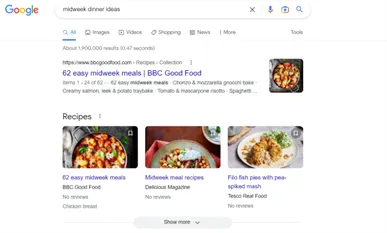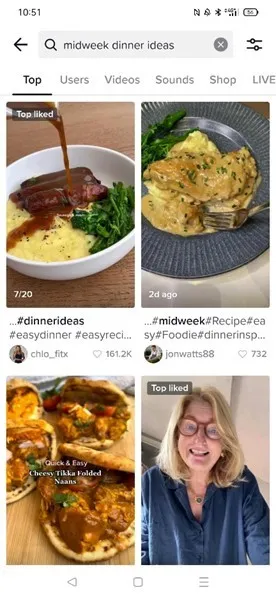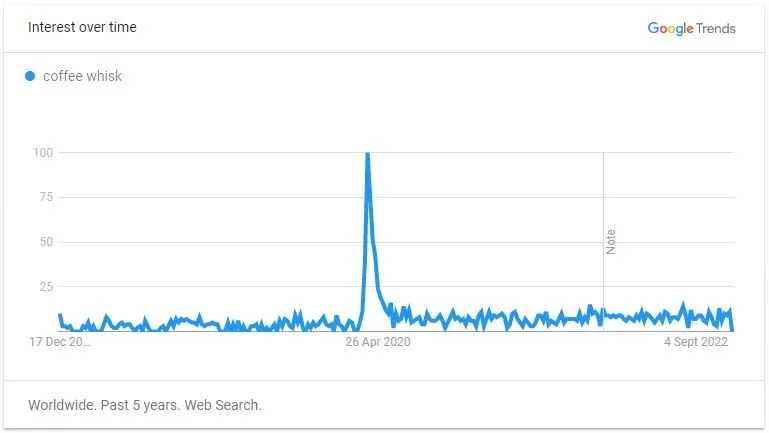TikTok. Until lockdown in 2020, the name TikTok was that of a Ke$ha song to many, rather than the next viral social media platform. Valued at nearly $50 billion in 2021, and reaching 740 million new users the same year, TikTok is quickly taking over as the firm favourite social media platform.
TikTok rose to notoriety in 2018, after Chinese social media company ByteDance purchased Musical.ly, a short form video content platform where users lip-synced to songs. At the time ByteDance had Douyin, which was TikTok, but for China. With the purchase of Muscial.ly, rumoured to be nearing $1 billion, ByteDance suddenly had access to 100 million western users. By rebranding Musical.ly as TikTok in 2018, ByteDance opened up a new world of content creation that we hadn’t seen since Vine was shut down in 2016.
With short videos lasting between one second and ten minutes, on an endlessly scrolling loop, TikTok is a content-driven feed of information. Inspired by the easy-to-watch time drain, Instagram and YouTube have created their own rivals, namely Reels and Shorts, which are largely just re-posted TikToks.
But it’s not the bizarre amalgamation of content, the catchy riffs that infiltrate your every thought (it’s corn, a big lump with knobs anyone?) or the ease of virality that has captured the search world; it’s Gen Z’s use of it as a primary search engine and discovery platform that has really given it concrete status as a threat to other search engines.
What is TikTok?
TikTok is a video-sharing platform for videos between one second and ten minutes. Centred around the FYP (For You Page), users see an algorithmically generated feed of endless content, some relevant and some obscure.
Much like every other social media, you can follow, like, comment, and share on other users’ content. Brands as big as Scrub Daddy, the smiley face sponge, or Aston Martin’s F1 team, and as obscure as Wardens of Newtownards, a family-run department store in a town east of Belfast, use TikTok.
TikTok’s also an influencer maker, with users like Jack Joseph, who posts a variety of comedy-based content to the site, reaching 3.3m TikTok followers, 341k Instagram followers and 18.1k YouTube subscribers.
One of the biggest appeals of TikTok is the ability for anyone to become an influencer. You don’t have to set out as creating content that traditionally would be influencer-worthy, but people who post niche content find ways to generate huge appeal. TikTok enables anyone to become a huge influencer, as long as they dedicate the time and create watchable content.
With its huge mix of content from brands, influencers and everyday people making content for friends, there really is something for everyone on TikTok.
Gen Z and TikTok: A Match Made in Heaven
Gen Z, the internet native generation, are born between 1995 and 2010. They’ve seen the internet develop from its lowly beginnings, some have known dial-up, and for others, broadband was their first step into the internet. For Gen Z, TikTok is just another part of the creator economy and not an unfamiliar concept for them to grasp.
For Gen Z’s, TikTok is becoming a predominant search engine, and Google themselves recognise that. “In our studies, something like almost 40% of young people, when they’re looking for a place for lunch, they don’t go to Google Maps or Search,” Google’s Senior Vice President of Knowledge & Information, Prabhakar Raghavan said. “They go to TikTok or Instagram.”
For the generation that’s been brought up on technology, influencer economies and a veritable world of information at the click of a button, it’s no surprise they’re demanding a more intuitive and explorative way to search. It seems that social media, especially TikTok, are providing that.
But how are Gen Z utilising TikTok as a search engine and vehicle for product discovery?
TikTok as a Search Engine: The Basics
TikTok, as it’s a newer platform compared to Google, hasn’t got years of search-based algorithmic data to make searching. But people aren’t necessarily looking for things on TikTok that they would on Google.
TikTok is capturing the top-of-funnel search for product discovery, inspiration and commercial research. Think product videos, reviews, how-tos and explainers. Whether you want to search for a problem like cleaning out your copper sink or simply want an idea of dinner to have that evening, TikTok will have a plethora of videos available.
For your fashion lover, there are lookbooks and ‘get dressed with me’ style videos courtesy of Sammi Jefcoate. If you’re after obscure food recipes, try El Burrito Monster. Want to know about swimming pool maintenance? The Pool Guy has 13.7m followers and can help you out. There’s inspiration boundless, and people are searching for it.
According to TikTok, 60% of Gen Z TikTok users have bought a product because they saw it on TikTok in the last year and 79% of Gen Z TikTok users leverage the platform to research and learn more about new products or brands.
Example: Midweek Dinner Inspiration

So, it’s a Wednesday evening and you’re wondering what to have for a midweek dinner. You need some quick inspo, so turn to Google and the below appears:
The top results are lengthy lists, with ads smattering the pages, and relatively simple dishes. There’s still a large choice for the searcher, and they have to whittle through the pages to find something they want.
Contrast this to TikTok. I searched midweek dinner ideas and was presented with a list of videos, each containing one recipe. I can see the dish being made before I eat it. There’s no overproduced imagery or ads, it’s just a phone and a person cooking. There’s also less choice for me to see, and I can just scroll until I find something I want without having to go to different webpages.

Why is TikTok More Popular as a Search Engine?
There are three reasons that we suspect, as search engine experts ourselves. One is what we’re calling spontaneity intent. Then, there’s the up-to-date algorithm. Finally, the real-life experiences and learned reviews.
#1 – Spontaneity Intent and Discovery
Google requires an element of knowledge of what you want before you find something. It’s harder to carry out spontaneous search with terms like “ideas” or “what”. TikTok says that “TikTok users are 1.3x more likely than other platform users to purchase a product to lift their spirits.”
This is where the concept of what we’re calling spontaneity intent comes in. It’s like product discovery, except you might not know what exactly you want but you know you want something. While Google is great at helping users midway down the funnel, their top of funnel experience is sometimes lacking. TikTok generates that top of funnel demand for unknown products and services, which then websites and Google can turn into actionable demand.
With TikTok, it’s not always about the need, it’s often the ‘want’. For example, prior to TikTok millions of people probably wouldn’t have got obsessed with dalgona coffee, a Greek coffee that involves whipping up instant coffee with sugar and then adding ice and milk.

Before this trend, most people wouldn’t have wanted to buy a handheld microwhisk for making dalgona coffee. But looking at the trends, you can clearly see how many people then went to Google with the commercial intent of buying a coffee whisk.
TikTok generates that top-level spontaneous interest through user generated content that’s searched for and consumed virally on the platform, which then funnels into more intent driven search on Google.
#2 – Algorithm Update Speed
TikTok’s algorithm kicks in as soon as a video is posted, or a comment made. Within hours a video can reach a million plus views. Users searching for news, trend information or even just an idea, will see much more up to date content than Google, especially for those by the minute pieces.
You’ll often see comments like “why aren’t the news talking about this” on sensitive topics, like the recent shooting at a gay bar in Slovakia, where by the morning after the shooting, TikTok’s had reached millions of views, while the news had barely spoken about it. There’s first-hand accounts of people at the scene, meeting the president and more all freely available on TikTok, like the video below which has nearing 4 million views.
@marianxmarko She is my president for this and many other things she did while others were too afraid to stand up!!! #tragedy #president #queercommunity #queer #gaybar #news #empathy #equality #stophate ♬ original sound – marian
This has both its pros and cons. Anyone can go viral, which means any misinformation can go viral. Unlike Google, which takes a while to show rankings, especially for sensitive TikTok’s, misinformation could be spread, and no one would know until it was potentially too late.
#3 – Real Life Experience
TikTok is a great platform for the discovery of products, brands and services, and a lot of this is through personal experience. Users, even those who wouldn’t class themselves as an influencer, will post a video sharing a product or service, and it can go viral.
People are less filtered and ‘perfect’ on TikTok than they may be on Google. With TikTok, you aren’t targeting search terms, you aren’t writing with a goal in mind, you’re creating content to be seen by the masses and in a succinct format. As such, the extensive product reviews and recommendations that you’d normally get on Google aren’t applicable on TikTok. This means that for the young people of today, they’re more likely to trust a product review or service on TikTok, rather than one written by an affiliate site on Google.
Should You Use TikTok for Business?
Well, it really depends on what your goal is and how much time you have. To have a higher chance of success, you need to be posting a variety of content up to five times a day. You have to be trend-reactive the minute you see one and understand where your brand should be vs where it’s not needed.
Brands like Duolingo and Ryanair are exemplary examples of brands who’ve created their own niche on TikTok and thrive in it. However, you can’t expect to replicate the success of a brand by copying it, or you’ll get dragged in the comments by users.
Is there Search Potential on TikTok?
People will use the search function on TikTok, but the main way your search potential will happen is through the FYP (For You Page). By creating content related to your niche, such as digital marketing content, you can begin to pick up interest. But be prepared for this approach to not work instantly. Whatever videos go viral, or get comments that you can reply to, do so. You have to begin the chain of virality for TikTok to become a search-led platform for you.
Want To Understand How Different Search Trends Are Affecting You?
We’ve curated a regular digital dispatch that sends out quarterly with the latest and greatest search and digital marketing news. Subscribe below.
Or, you can work with us and our SEO team. Our team understand the latest trends and how they could impact your search performance. See how our expert-led SEO services could take your brand to new levels. Get in touch






